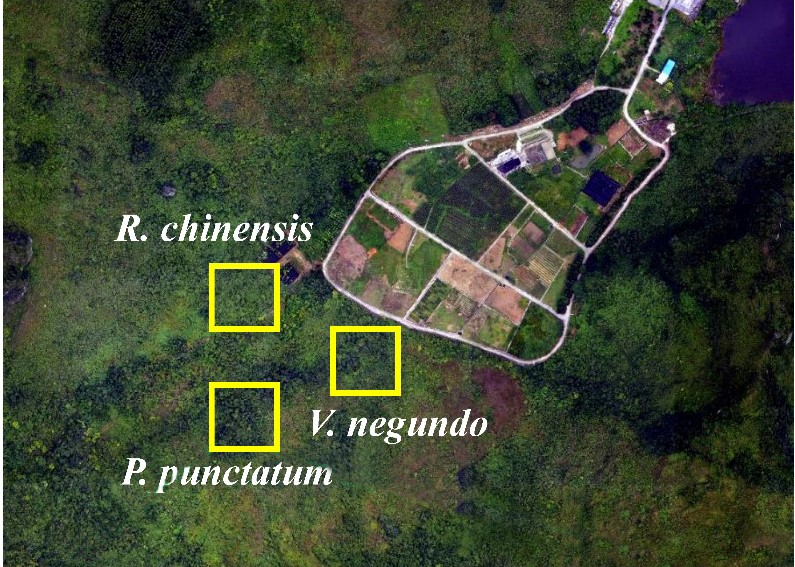- You are here: Home > Research > Research Progress
Shrubland is widely distributed globally from the tropics to the polar regions. As a single biome, shrubland occupies the largest area in terrestrial ecosystems by accounting for more than 14% of the total. In the karst region of southwest China, shrubland is also common due to widespread post-agricultural succession.
Free-living N2 fixation (FNF hereafter) is an important pathway of external nitrogen input to natural terrestrial ecosystems. Although N2 fixation is crucial in determining ecosystem structure, processes and functions, the rates of and controls on N2 fixation have not been well understood. So far, few measurements of N2 fixation have been conducted in shrubland.
Recently, researchers in the Institute of Subtropical Agriculture (ISA) of Chinese Academy of Sciences investigated the FNF in soil and litter in three dominant shrublands (Pterolobium punctatum, Vitex negundo and Rhus chinensis, respectively) in a karst catchment, southwest China.
Through the field measurements in January and July 2016, the team found that N2 fixation had distinct patterns among shrublands or between seasons.
Across the two seasons, soil N2 fixation rate in Rhus chinensis was 31% greater than that in Pterolobium punctatum, and litter N2 fixation rates in Vitex negundo and Rhus chinensis were 13 and 16 times greater than the rate in Pterolobium punctatum, respectively.
Besides, both soil and litter N2 fixation rates were similar between the two seasons in Pterolobium punctatum, but the rates were significantly higher in July than in January in the other two shrublands.
The team showed that the strongest explanatory variable for soil N2 fixation was total nitrogen in July; and that for litter N2 fixation was nitrogen in January, but was C:N ratio in July. And they estimated the annual N2 fixation rates were variedfor the three shrublands.
These findings show that large variation in N2 fixation may occur among shrublands within a small scale. And more measurements are needed to get a representative range of N2 fixation rates for the shrubland biome.
This study was supported by the National Natural Science Foundation of China (41571295, 41877094), the National Key Research and Development Program of China (2016YFC0502404) and the National Key Basic Research Program of China (2015CB452703).
This results entitled "Free-living N2 fixation in three karst shrublands, southwest China" has been published in Ecosystems, and is available for download at https://link.springer.com/article/10.1007/s10021-018-0305-6

Schematic diagrams showing the relative locations of the three shrublands in the catchment. (Image by LI Dejun)
Contact: LI Dejun
E-mail: dejunli@isa.ac.cn
Institute of Subtropical Agriculture, Chinese Academy of Sciences
Address: Mapoling of Changsha City, Hunan province, P.R.China.Tel: +86-731-4615204 Fax: +86-731-4612685

